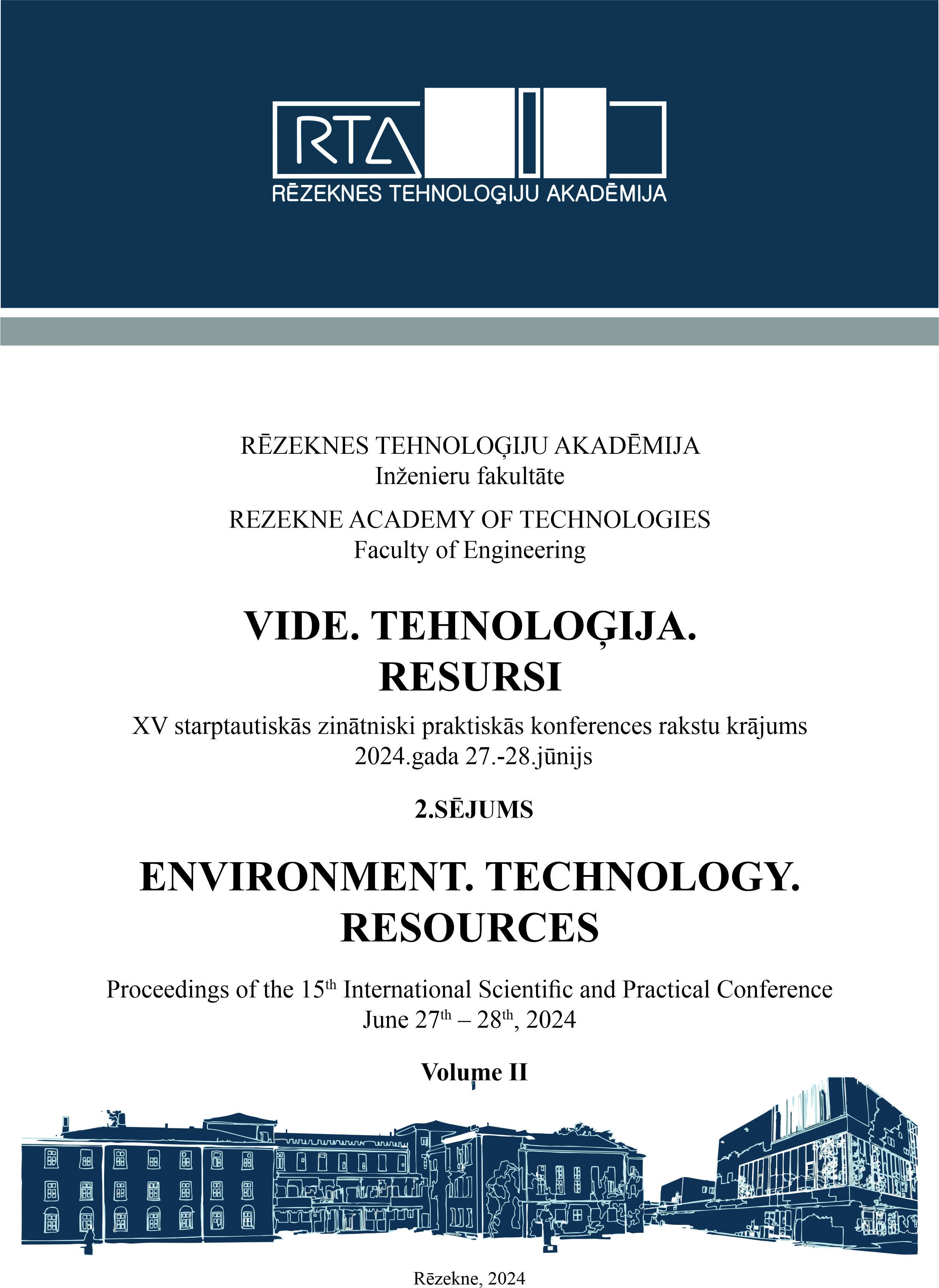APPLICATION OF FUZZY LOGIC IN CYBERSECURITY DECISION MAKING AND ANALYSIS AFTER A CYBER INCIDENT DETECTION
DOI:
https://doi.org/10.17770/etr2024vol2.8022Keywords:
cyber incident, fuzzy inference system, fuzzy logicAbstract
This scientific report describes an approach of applying a fuzzy logic decision-making system (Fuzzy Inference System) after detecting a specific cyber incident in a given communication and information infrastructure, supporting the adoption of rapid and adequate measures in the affected systems, both to minimize the consequences for the infrastructure and the functioning of the systems as in general, as well as to support the detailed analysis and prevention of a given cyber incident that has been committed. The cyber security decision-making system was designed in MATLAB’s Fuzzy Logic Toolbox, and the input fuzzy variables “Cyber-attack”, “Attack Target”, “Aim of Attack” were used to select specific action rules. The output fuzzy variables that are designed to produce the result of the operation of the fuzzy rules are: “Hardware actions”, “Software actions”, “User actions”, “Cyber intruder's profile”. The purpose of the presented system is to speed up processes after a cyber incident, because delayed and inadequate actions after such an event can lead to an even worse final state of a small or large system, as well as be the cause of great losses for an institution or business. The conducted simulation experiments with different values of the input fuzzy variables prove the approach and the correct decisions that can be made after cyber incidents with different characteristics.
References
K. Slavyanov, C. Minchev, „An Algorithm of Fuzzy Inference System for ISAR Image Classification“, Environment. Technology. Resources, Rezekne, Latvia, Proceedings of the 11th International Scientific and Practical Conference., 2017, Volume II, pp 154-158, https://doi.org/10.17770/etr2017vol2.2599
D. K. Jana and R. Ghosh, "Novel interval type-2 fuzzy logic controller for improving risk assessment model of cyber security" , Journal of Information Security and Applications, 2018, 40, pp. 173–182. https://doi.org/10.1016/j.jisa.2018.04.002
S. D. Guikema and T. Aven, "Assessing risk from intelligent attacks: A perspective on approaches", Reliability Engineering & System SafetyVolume 95, Issue 5, May 2010, pp. 478-483, https://doi.org/10.1016/j.ress.2009.12.001
L.A. Zadeh, "The concept of a linguistic variable and its application to approximate reasoning—I", Information Sciences 8, 1975, pp. 199-249.
L.A. Zadeh, "Outline of a new approach to the analysis of complex systems and decision processes", IEEE Transactions on Systems, Man, and Cybernetics, Vol. 3, No. 1, Jan. 1973, pp. 28-44.
E.H. Mamdani, S. Assilian, An experiment in linguistic synthesis with a fuzzy logic controller, International Journal of Man-Machine Studies, Vol. 7, No. 1, 1975, pp. 1-13. https://doi.org/10.1016/S0020-7373(75)80002-2
I. Subach and I. Parashchuk, “Methodology of formation of fuzzy associative rules with weighted attributes from SIEM database for detection of cyber incidents in special information and communication systems”, Chapter in book: Advances in Automation II, March 2021, https://doi.org/10.20535/2411-1031.2023.11.1.283575
I. Subach and I. Parashchuk, “A Fuzzy Model of the Security Event and Incident Management for Technological Processes and Objects”, book: Advances in Automation II, March 2021, pp 550–559, https://doi.org/10.1007/978-3-030-71119-1_54
A. Bouramdane, Cyberattacks in Smart Grids: Challenges and Solving the Multi-Criteria Decision-Making for Cybersecurity Options, Including Ones That Incorporate Artificial Intelligence, Using an Analytical Hierarchy Process, September 2023, Journal of Cybersecurity and Privacy 3(4), https://doi.org/10.3390/jcp3040031
A. Borisova, “Contemporary languages for programming artifical intelligence”, International Scientific Conference "Defense Technologies" 2019, pp. 512-517, ISSN 2815-4282, https://www.aadcf.nvu.bg/scientific_events/dtf2019/AngelaRBorisova.pdf [Accessed Jan 10, 2024]
L. Nikolov, "Wireless Network Vulnerabilities Estimation", International Scientific Journal "Security and Future", Vol. 2 (2018), Issue 2, pp. 80-82, https://stumejournals.com/journals/confsec/2018/2/80.full.pdf [Accessed Jan 18, 2024]
M. Nedelchev and D. Slavov, “Cybersecurity recommendations and best practices for digital education”, Scientific research and education in the air force, 2023, pp. 47-52, https://doi.org/10.19062/2247-3173.2023.24.6
Y. Dechev, “Research on the impact of online learning on individual learning styles”, Mathematics and informatics, April 2023, Volume 66, issue 2, pp 155-169.
https://doi.org/10.53656/math2023-2-5-res
V. Stoyanova, “Problems with information security on mobile devices”, International Scientific Journal "Industry 4.0", WEB ISSN 2534-997X; print ISSN 2534-8582, Year IV, Issue 4, 2019, pp. 200-202,
https://stumejournals.com/journals/i4/2019/4/200
Mathworks support documentation, Fuzzy Toolbox, gauss2mf https://www.mathworks.com/help/fuzzy/gauss2mf.html [Accessed Jan 18, 2024]
Mathworks support documentation, Fuzzy Toolbox, gbellmf, https://www.mathworks.com/help/fuzzy/gbellmf.html [Accessed Jan 18, 2024]
Downloads
Published
Issue
Section
License
Copyright (c) 2024 Krasimir Slavyanov, Radostin Dimov

This work is licensed under a Creative Commons Attribution 4.0 International License.



